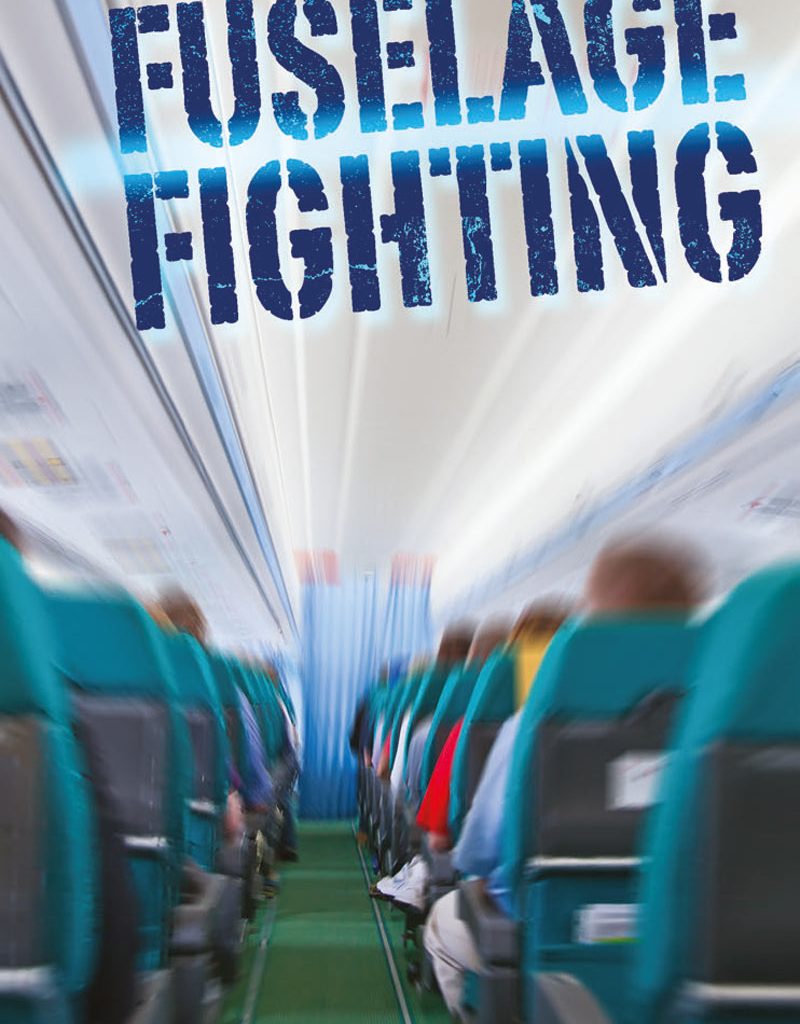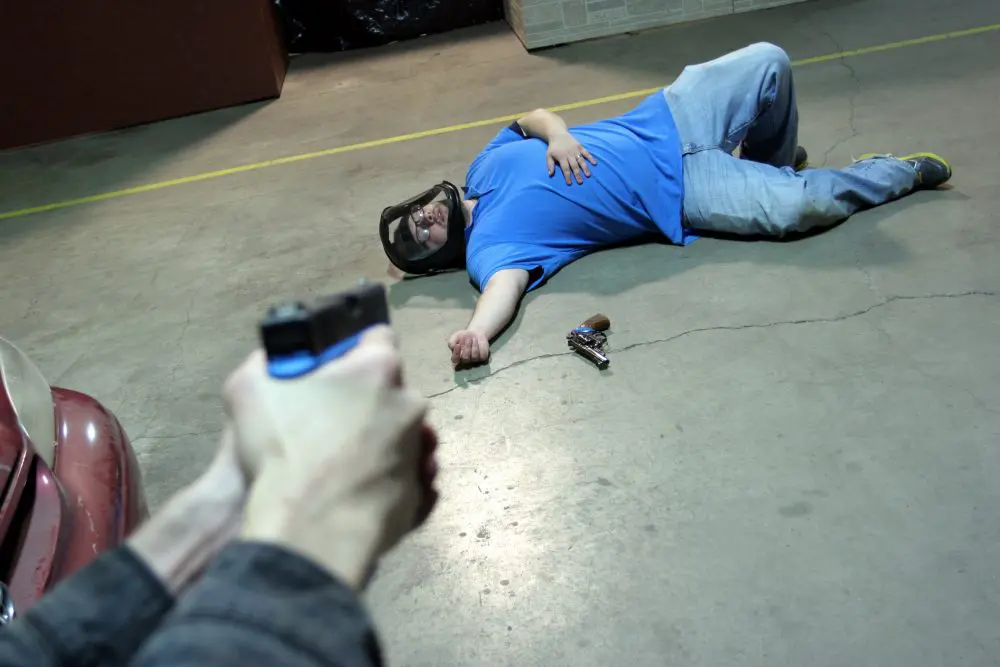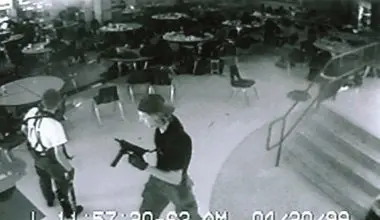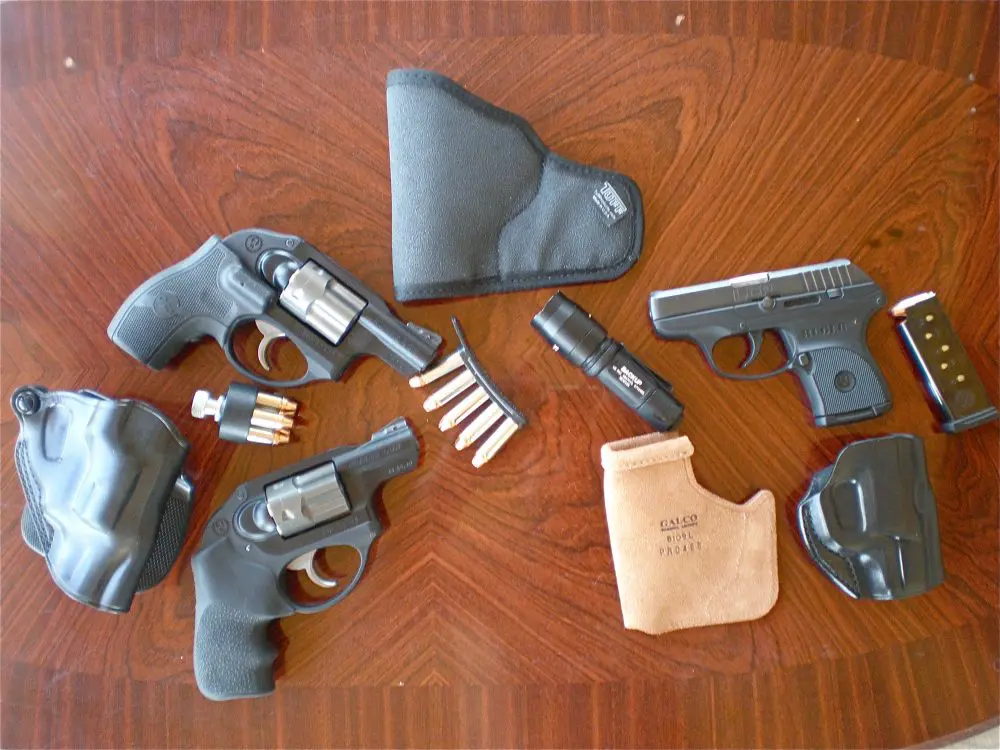 THE date September 11, 2001 will be remembered for generations. But on that day, as we watched endless replays of the hijacked flights impacting their targets, we didn’t yet comprehend how much this date would influence our behavior for years to come.
THE date September 11, 2001 will be remembered for generations. But on that day, as we watched endless replays of the hijacked flights impacting their targets, we didn’t yet comprehend how much this date would influence our behavior for years to come.
Since the horrific acts of 9/11, travelers all over the world have reconsidered how they prepare for their journeys. A quiet voice in the back of our minds constantly reminds us of nightmares past and forces us to take extra precautionary steps. We do our best to identify even the smallest behaviors of fellow travelers, we take extra time in security lines, dogs patrol the airports, TSA pays much closer attention to every person, and many Americans refuse to be victims.
It wasn’t until my recent work with the United States Federal Air Marshal Service that I totally grasped the gravity of our fears. Aside from the marshals’ own concerns, we also spoke about how the public’s views of flying have changed. Then I conducted a survey among 50 random citizens about traveling in the air. Surprisingly, the majority of them asked the same question: ”What can we do to protect ourselves?”
Back to the drawing board, I was compelled to identify the threats we face and devise a game plan specific to the confines of a commercial airplane fuselage. Let’s identify the characteristics and limitations of this scenario, and then consider our options to go “hands on” if needed.
Table of Contents
CLOSE QUARTERS
The term Close Quarters Battle (CQB) is typically used among military and law enforcement. Although a subjective term, it refers to a particular distance at which violent engagement must be fast and concise, and a point of dominance must be established immediately. For firearms engagement, CQB is 21 feet or under, while unarmed CQB is less than three feet.
For our purposes, we need to consider the unarmed portion of CQB simply because the average citizen will be unarmed and at close proximity when in an airplane.
Let’s start with looking at the environment. The fuselage of an airplane is very similar to a bus. The aisle is narrow, with occupied seats on either side of it, lighting is limited, and overall the space is cramped. How does this affect our game plan?
Footwork and maneuverability are the first factors influenced. Lateral or circling footwork like a boxer isn’t even an option. Our footwork is limited to direct and linear motions that need to be explosive and timely.
To be offensive, we step forward with total commitment and speed. To be defensive, we step directly rearward with the same commitment. Either way, the secret is to be dedicated to our motions. Being haphazard will surely get us injured.
Striking options are the second factor influenced. Many martial arts use long-range and circular kicking, but due to the space limitations in a fuselage, neither will be effective. Rather, we must use powerful low-line striking in rapid succession mixed with highleverage upper body strikes.
Because this is a life-or-death situation, our goal is always to eliminate the threat as quickly as possible. The “sport” mindset is out of place here. Our engagement will be one round, not round one. This also means that simple punches are not sufficient. We need to resort to our heavy artillery!
Collateral damage is something we also need to consider in CQB. If at all possible, we must eliminate or at least minimize the chance of injuring or killing an innocent bystander. This should particularly be a concern for any airborne law enforcement agent with a concealed firearm. He might choose to engage in hand-to-hand combat rather than discharge a firearm.
Weaponry will also influence our actions. Who’s armed and with what? Is it explosive or something simpler, like an edged weapon? Our plan must accommodate all possibilities. Though I cannot cover every scenario, the concept of our actions remains consistent. Attack quickly, bridge the gap and terminate the threat—period!
Finally, consider a few cognitive aspects of combat in a fuselage. Should we ever have the need to engage, we must also be aware that suspects are nestled among us. Though we’ve gone hands on with one person, others who haven’t yet revealed themselves may still be hiding among the innocent.
If one of them decides to attack us mid-combat, we have no choice but to go into full-fledged CQB mode. Also consider what I call duty. The fact of the matter is that you’ll be surprised how many people will not risk themselves for the greater good. I feel that as law enforcement or trained citizens, it is our duty to do everything we can to protect our peers. Accept the fact that you might be alone in this altercation, and move forward with precision.
Keeping all these factors in mind, our plan of action must be executed with authority and a pure offensive mindset. I turned to my 26 years of martial arts experience and innumerable encounters to put together what I believe are the most appropriate engagement tactics.
Having spent endless hours conducting training scenarios, I found that these particular techniques proved most effective and had high success rates. I will outline a few simple tactics that may greatly influence the outcome of an engagement.

CLINCH
No matter what techniques we employed, entering into clinch range was always favorable and necessary. At clinch range, we can immediately engage and gain a position that allows us to not only control, but also terminate with high leverage techniques including lethal tactics such as neck breaking.
However, getting into the clinch requires very aggressive footwork forward, along with an infliction of pain to vital targets such as the eyes, throat or groin. Once we commit to that entry, we can simply reach in for the neck. Be sure to position the hands one on top of the other instead of interlocked fingers. Keep the elbows inward and the forearm tight against the clavicle for total control.
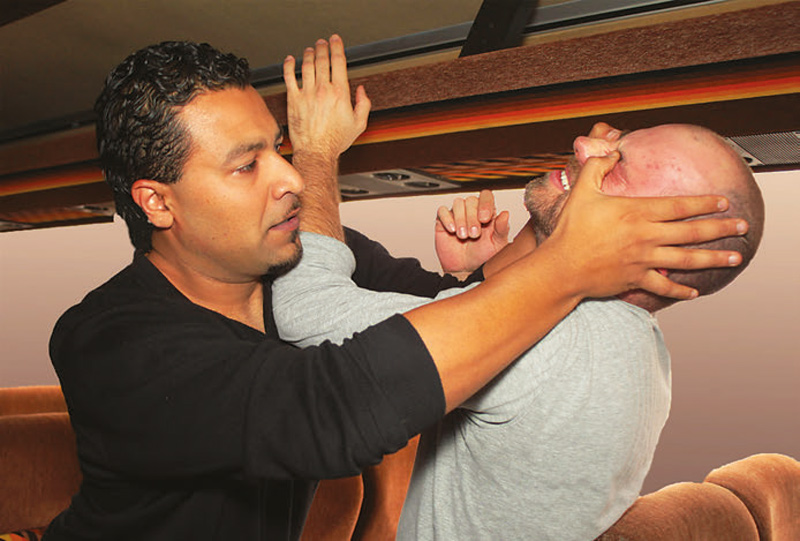
EYE GOUGE
I chose the eye gouge as the first technique because of its simplicity, effectiveness, and instantaneous results. Although not a game ender, the eye gouge is a great set-up for other, heavier-hitting techniques. Also, since the eye is the only part of the body that makes direct contact with the frontal lobe of the brain, it is susceptible to extreme pain despite chemical influences such as alcohol or drugs.
Delivery of the technique is very simple. We can either use our thumbs then press inward as we grab the clinch, or use our fingertips in a whipping motion from a greater distance. The most common reaction to this technique is to cover the eye while typically dropping anything held in the hands.
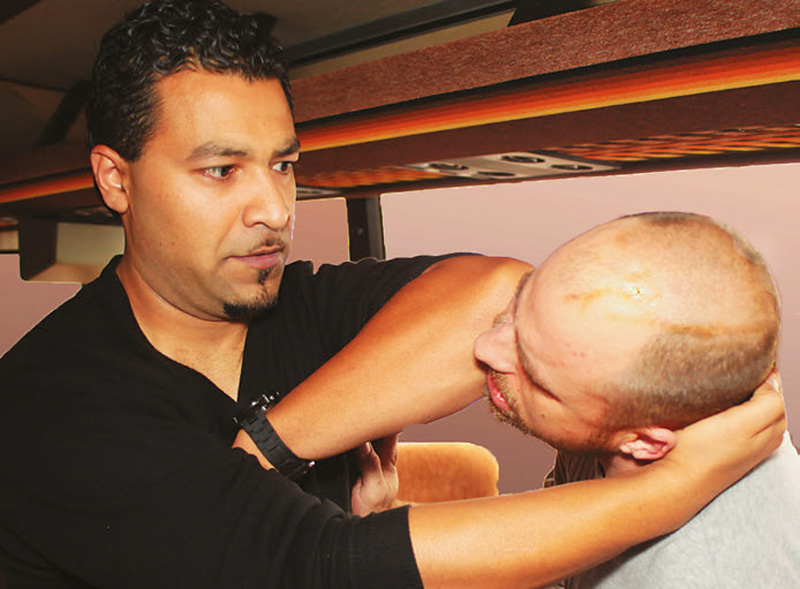
ELBOW STRIKE
The second technique we can employ is one of my favorites—elbow striking. Unlike the sport use of the elbow, which utilizes more of the blunt side of the forearm, we want to use the pointed tip of our elbow. Targets to strike with the elbow are the temple, bones around the eye, bridge of the nose, jaw line, top of the head, and the throat.
We can use the horizontal elbow, but an angular or vertical upward motion drastically increases effectiveness. If you use elbow strikes, make sure to never fully release the neck. When using both elbows in succession, release only one hand from the clinch to strike, then put it back immediately. Controlling the neck is vital to close quarters hand-tohand combat tactics.

KNEE STRIKE
Earlier, I stated that low-line attacks must be executed properly. Since we already know that standard kicks aren’t realistic in tight spaces, we must resort to using our knees. The beauty of knee strikes—in addition to their heavy-hitting characteristics—is that they can be done from any standing position.
Acquire the clinch and use the knees to strike the groin, inner thigh, outer thigh, or solar plexus. Keeping the knees low will help in firing multiple strikes in rapid succession without sacrificing balance or footwork. For increased damage, point the knee by raising your heel to your backside and assist the motion by thrusting the pelvic region forward. Add the eye gouge as you knee, and you have an amazing combination guaranteed to put anyone out of commission!

HEAD BUTT
Done properly, head butting can be one of the most violent techniques in unarmed combat. Don’t think of the Hollywood style head butt, in which we attack face-to-face—that will hurt you more than the opponent.
Here is the science: we want to connect the hardest part of our head with the softest part of theirs. What’s the hardest part? Where the hair line starts, the first third region on top of the head, has the greatest amount of bone with the fewest number of nerves. The opposite is the face, which has the least bone and the most nerves.
Bend your knees and focus on the suspect’s waistline area to ensure you’re striking with the correct portion, then violently spring upward as you pull them downward. A solid head butt is like dropping a bowling ball on someone’s face from 20 feet up. Bottom line: it stops everyone.
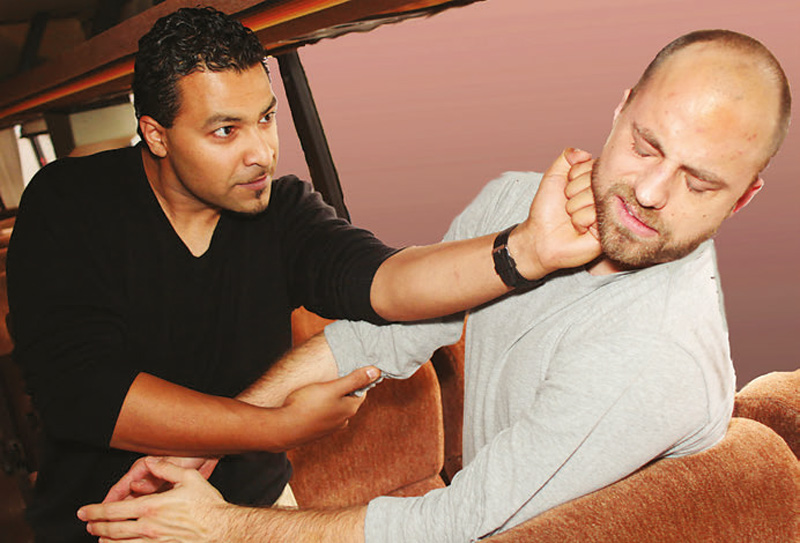
THROAT STRIKE/JAB
Another personal favorite is the throat strike. We can strike the throat using either a fist or the webbing between our thumb and index finger. Consider using the same hand position as choking someone or holding a can, but instead of having a compression grip and squeezing, we thrust the hand forward in attempts to collapse the larynx.
Be advised that blunt trauma here may be fatal, so you must apply it with that in mind. Even when not fatal, the throat jab always gets instant stoppage and release of any potential weapons in the hands.
CONCLUSION
These techniques may seem crude and simple to some, and overly violent to others. But when lives are on the line and action must be fast, we need to keep things simple and effective.
After hundreds of training scenarios and plugging tactics in and out, what works and what doesn’t became evident. Even through protective training gear, the brute force of these techniques proved results greater than anticipated. Furthermore, these tactics were a perfect blend for the confines of an airplane fuselage, bus, train, or any other close-quarters environment.
Engaging the clinch allowed us to fully engage while controlling the collateral damage. When added to proper firearm disarms and edged weapon tactics, our game plan made a complete fuselage fighting system.
